Where has the thalia puttu gone? I’m talking about the hearty “idli batter with a touch of coconut and a swig of toddy” puttu which has been missing for far too long on my dining horizon. Am I eating in all the wrong places, or has it really slipped so far in the puttu rankings that it doesn’t make the list anymore?
On our trips to Coorg when I was a kid, I could always count on thalia puttu, savoury or sweet versions, being on the menu in most of the households we visited. Now it seems that its fluffy cousin, the sanna of Mangalore and Goa, has usurped its place. And I’m wondering why?
Let’s see. Both sannas and thalia puttu require a period of several hours of fermentation to leaven the batter, so it can’t be about a lack of time. Could it be that the typically denser thalia puttu, with a portion of urad dal (black gram) is considered too “heavy” in today’s calorie conscious world? If that’s the reason, more’s the pity, because the gram would make it the more nutritious choice.
Or, perhaps it’s the scarcity of toddy to help the batter rise and shine? No, that can’t be it, because that would take sannas off the menu too. Besides, there are plenty of recipes that don’t use toddy for the leavening process, relying instead on yeast, a pinch of baking soda, sugar, and even coconut water.
Whatever the reason, I think it’s time to put thalia puttu back on our plates.
There is a recipe in my mother’s recipe file titled “Lime Cottage Thalia Puttu”. Lime Cottage was the home of my great uncle Bopaya and I have the fondest memories of our visits there. Brother of Nanju Uncle and the youngest of my paternal grandmother’s siblings, Papu Mama and his wife, Juby Aunty always welcomed us with the utmost warmth and affection.
I think the delicious thalia puttu that Juby Aunty served us with chicken curry must have been made from that same recipe.
Gentle voiced and always with a genuine interest in what each of us was doing, Juby Aunty radiated calm. Papu Mama on the other hand, was a blur of quicksilver talk and energy, quizzing us about this and that, entertaining us with magic tricks – keeping us guessing whose ear he would conjure a coin out of!
But the highlight of any visit was watching his pet dogs perform a dance routine worthy of Broadway. (Or, in today’s world, Youtube!) The pyes and pomeranians would sit to attention, waiting for a command to pick up a stick laid in front of them. When Papu Mama gave them the cue, they would pick the stick up in unison, rear onto their hind legs, front paws gracefully limp , and mince sideways, back and forth or in circles around the yard, keeping time to the rhythmic commands and sounds of encouragement from their master. Performance over, they would be rewarded with a little treat and retire happily to the backyard, while we retired to the cozy dining room for more substantial fare.
I had always assumed that the key difference between thalia puttu and a sanna is the presence of urad dal in the former, but a discussion prompted by a query by my friend Apolina yielded the interesting fact that urad is sometimes included in sanna batter in Mangalore. According to Shireen Sequeira who writes the delicious Ruchik Randhap blog, her grandmother says that a small amount of urad was indeed included in sannas in Mangalore.
She says:
“In those days when there was no refrigeration toddy and not yeast was used for fermentation and very little urad (like a fistful for good measure) was added to it. Apparently the urad not only helped preserve the sanna for longer but also added to the texture, taste and sponginess. Since the quantity of urad is very little in comparison to the proportions of rice used it remained more or less true to its nature (of being sanna and not idli as the latter has a lot more urad added to the batter).”
So thalia puttu and sannas are even more closely related than I had thought! Thank you, Shireen and Apolina!
I’ve found a number of variations in thalia puttu recipes too. Some add just a couple of teaspoons of urad, while others use a higher proportion. Other variations include using no fenugreek, or coconut. One recipe calls for grinding the coconut into the batter, which yields a heavier puttu.
The version I like best is one that flirts with the middle ground between idlis and sannas. Made with fenugreek in the mixture, enough urad dal to give it body, and coconut milk, which gives it a lovely flavour and texture.
Thalia (plate) puttu
Steamed rice, coconut and lentil cake
- 2 cups rice
- 1/2 cup husked urad dal
- 1/2 tsp fenugreek seed
- 1/2 cup soft cooked rice
- 1 cup thick coconut milk
- 2 tsp sugar (optional)
- Salt to taste
- 1/4 tsp baking soda
or
1/4 cup fresh toddy!
Wash and soak the rice and fenugreek in enough water to cover the surface. Separately soak the urad dal in similar fashion. Set aside for at least 6 hours, or overnight if possible.
Grind the urad dal until it is smooth and fluffy, using a little of the soaking water. Drain the rice and fenugreek, reserving the water. Grind to a smooth batter, adding the soaking water as needed*. Combine the urad and rice mixtures and grind together.
Add the coconut milk and sugar and mix thoroughly. (Some recipes add the salt and baking soda at this stage, but I prefer to add it before cooking.) If you’re using toddy, add it now.
Cover the batter with a loose fitting lid or a tea cloth and set it down in a comfortably warm place to ferment. “Near the fireplace” as the Lime Cottage recipe reads would be ideal, but I make my oven’s pilot light do the job!
The next day, you should have a batter bubbling with quiet enthusiasm. Mix the baking soda with a spoonful of batter and blend it back into the mixture along with the salt.
Pour into shallow plates and steam for 30-35 minutes or until a test skewer comes out clean. (See the paputtu post for tips on equipment and steaming.)
Variations:
For sweet thalia puttu, mix jaggery syrup and slivers of fresh coconut into the mixture before steaming. Use about 100gms of jaggery per plate. Add more if you like it sweet. Eat with ghee or fresh butter. Try it. It is delicious!
* If you have a “wet grinder” you can grind all the ingredients together.

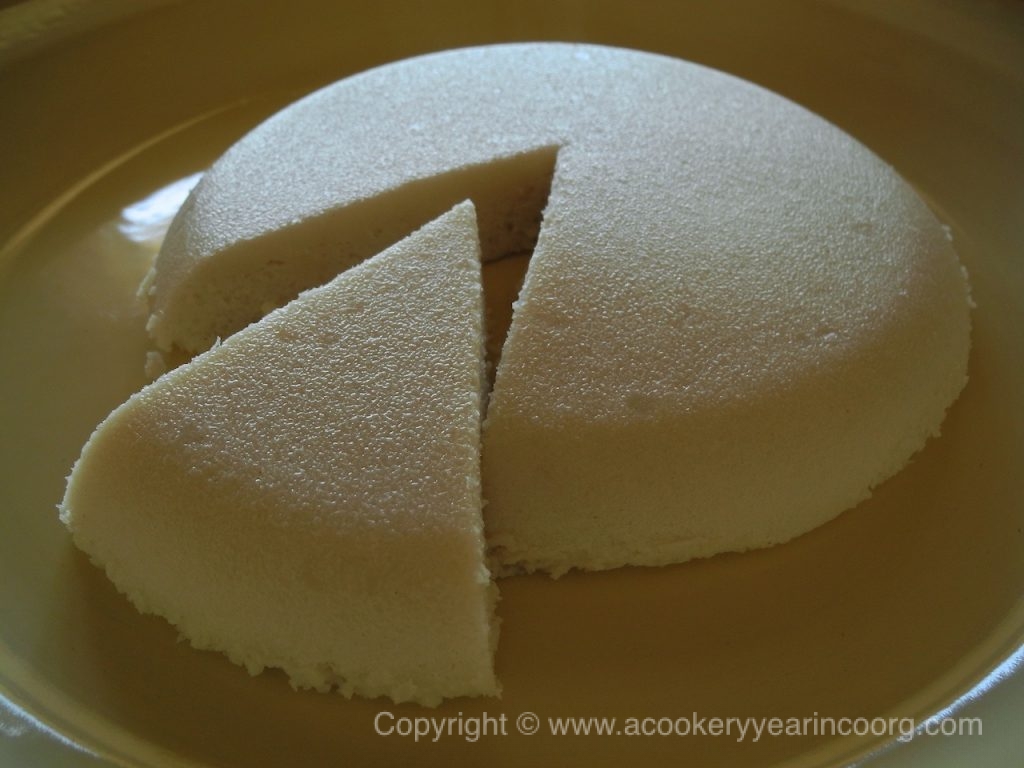






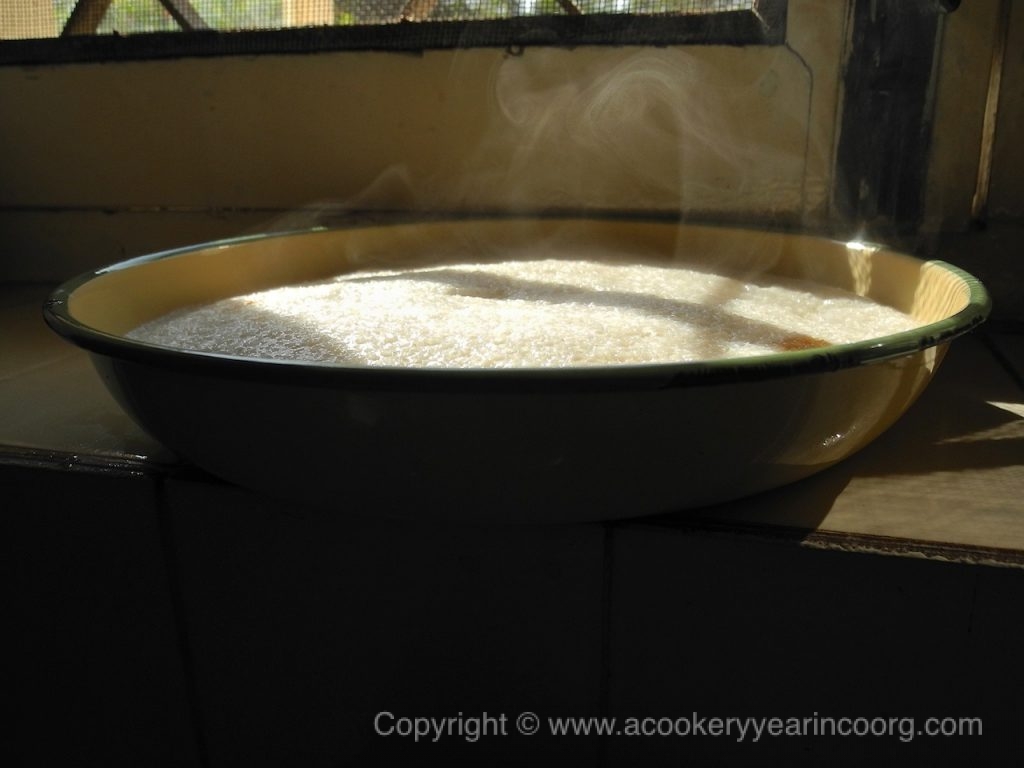
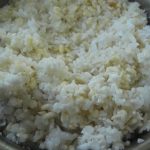
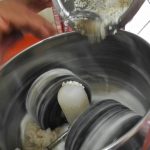
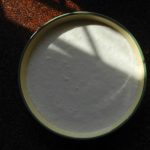
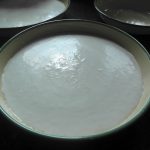
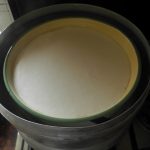
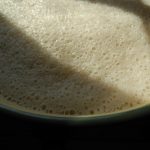
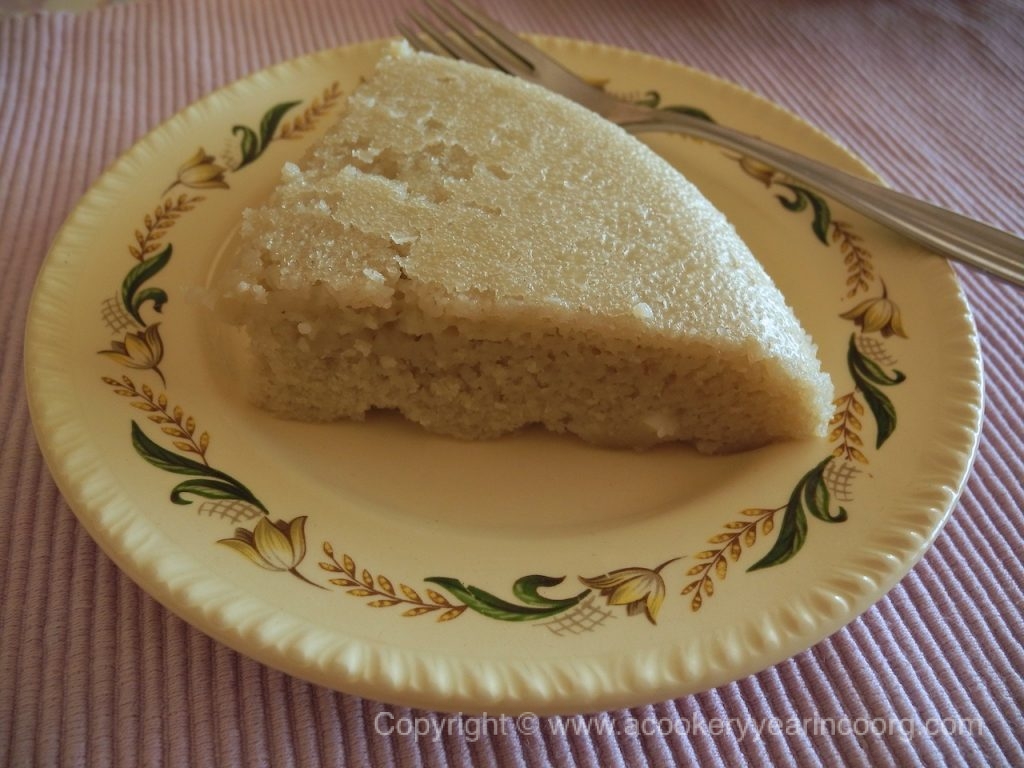
Another discovery while on your blog :-). It’s on my to-do list. I also need to try beer instead of toddy for the fermentation. Will keep you posted
I think you’ll like this one, Apolina! And I’m waiting for the results of that beer experiment!:-)
As always beautifully written piece with fabulous photographs. The recipe sounds somewhat similar to Ramasseri idli which uses much less urad (compared to idli) and a large pinch of fenugreek; but no coconut milk. I am also waiting for the results of Apolina’s beer experiment in the batter.
Thank you, Ammini! It’s interesting how many little variations came up in these thalia puttu recipes, including no coconut versions. That is curious to me, because the sannas that so often replace thalia puttu these days are always with coconut. Changing tastes, I guess! If you do try this recipe out, be sure to try the sweet version too .Those Ramasseri idlis are on my “must eat” list. :–)